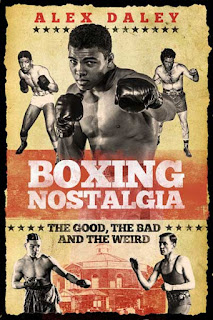Every fight fan of a certain age knows about the 1950s and ’60s world heavyweight champion Floyd Patterson, whose bouts with Archie Moore, Ingemar Johansson, Sonny Liston and Muhammad Ali are part of boxing folklore.
But I wonder how many remember Floyd’s younger brother, Ray, a fellow heavyweight who exiled himself from America to fight out of Sweden at a time when pro boxing was illegal there and punishable by prison.
One of 11 siblings, Ray was born in New York in 1942 and took up boxing hoping to emulate his famous brother. After winning two New York Golden Gloves titles, he turned pro in March 1963 with a two-round stoppage win at Madison Square Garden.
After two more wins in the States, Ray took a match in Sweden on the undercard of Floyd’s bout with Italian heavyweight champion Santo Amonti. Despite losing on a split decision to his opponent, Lars Olof Norling, Ray fell in love with Sweden. In fact, he liked the country so much he stayed and had a string of contests – all wins.
After briefly returning to America for three fights — two wins and a split-decision loss to the now-famed Chuck Wepner, who inspired Sylvester Stallone’s Rocky — Ray went back to Sweden, became a Swedish citizen and never boxed outside Europe again.
UK fans got their first glimpse of Ray in April 1966 when he outpointed Welshman Carl Gizzi over ten rounds. Over the next six years Ray fought in Britain nine times, losing to ‘Golden Boy’ Billy Walker and British and European heavyweight champs Jack Bodell and Richard Dunn. However, he did draw with champions Joe Bugner and Danny McAlinden and stopped Midlands Area titlist Johnny Prescott.
Ray invariably gave a good account of himself. When he fought Bugner in April 1970, for instance, many — including Ray himself — felt he deserved the decision. In his December 1966 Albert Hall bout with Billy Walker, Ray gave the fans a barnstorming display before succumbing to the Londoner’s relentless assault in the eighth.
When Graham Houston tracked Ray down for Boxing News in 1970, professional boxing had just been banned in Sweden, and even exhibition bouts and gym sparring was prohibited for pros.
Pro boxing remained illegal there until 2007, which meant that Ray, who worked at a car factory in Gothenburg, was restricted to roadwork. His sparring and other gym work only started when he arrived in the country where he was fighting, often leaving him little time. When he fought Bugner, for example, he’d only had nine days’ training.
Like his brother Floyd, Ray was free thinking and enigmatic. When asked about the Vietnam War he politely declined to answer, saying, ‘What opinions I have of it I prefer to keep to myself.’ He had avoided the US military draft by staying in Sweden, but insisted he had to remain there to obtain his Swedish citizenship.
When Houston asked if he’d ever return to America, Ray spoke of the problems of raising mixed-race children there and how US culture would shock his Swedish wife. ‘I don’t say there’s no prejudice in Sweden but I have not met any personally,’ he declared.
Being related to Floyd Patterson did not hurt Ray’s box-office appeal, but he was more than just the brother of someone famous. He was a genuine crowd-pleaser.
Ray ended his pro career in 1973 with a record of 26 wins, 11 losses and five draws.
Article © copyright Alex Daley.
This piece by Alex Daley (first published in Boxing News on 22 October 2015) is one of 132 articles featured in the anthology Boxing Nostalgia: The Good, the Bad and the Weird. You can find our more or buy a copy here.


